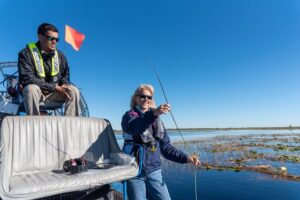By BLANCHE HARDY
The U.S. government’s Fifth National Climate Assessment, released last fall, indicates that climate impacts from sea level rise and increasing storm frequency and intensity are transforming coastal built and natural landscapes and requiring attention to resilience and adaptation.
This climate change report suggests that strategies, including nature-based solutions and planned relocation, can help communities adapt to both current and future increases in the severity of coastal hazards across the U.S.
The report provides three key messages about coastal effects:
- Coastal Hazards are increasing due to accelerating sea level rise and changing storm patterns.
- Coastal impacts on people and ecosystems are increasing due to climate change.
- Adaptation reduces risk and provides additional benefits for coastal communities.

The report suggests that sea levels will rise from 1 foot to 6.6 feet internationally by 2100. Additionally, coastal flooding is increasing as a result of both tidal and storm events. According to the report, annual frequencies of both minor and moderate coastal flooding increased by a factor of 2–3 along most Atlantic and Gulf coastlines between 1990 and 2020.
“Changes in frequency and scale of storm events and sea level rise have impacted USACE (federal) projects across the State of Florida to varying degrees,” said David Ruderman of the U.S. Army Corps of Engineers Jacksonville. “Impacts and anticipated future impacts vary widely from location to location.”
St. Johns Riverkeeper Lisa Rinaman said Florida’s longest river is particularly susceptible to sea level rise.
“Rising sea levels are making storm surge events worse, causing more septic tanks to fail, undermining infrastructure, pushing saltwater further upstream, and threatening the health of our river and our communities,” she said. “Higher salinity can kill freshwater wetlands, trees, and submerged grasses.”
Climate change is increasing the chances of multiple climate hazards occurring simultaneously or consecutively increasing financial loss and disrupting supply chains, the report states. Coastal counties nationally contribute $11 trillion annually (in 2022 dollars) in goods and services and employ 58.3 million people.
Rinaman said that submerged aquatic vegetation (SAV), which provides biofiltration, food, erosion protection, and other benefits, is declining.
“Tropical storms and hurricanes not only increase light attenuation by increasing color and suspended solids in the system, but they can also remove SAV through physical scouring of the littoral zone,” she said.
Storm impacts are more impactful in areas where wetlands have been reduced. Under normal conditions, the river’s network of vegetation and wetlands act like a sponge by slowing the flow, absorbing nutrients, and filtering out sediment. When the wetlands are reduced through human impacts, such as dredging and development, the river’s natural ability to slowly filter runoff is inhibited. This increases flooding in areas near the river and increases the risk of toxins, turbidity, and nutrient runoff, which can cause extreme harm to SAV health.
The Corps focuses on flooding hydrology and hydraulics. USACE Jacksonville is engaged in feasibility studies, and hydrology and hydraulics surveys with non-federal co-sponsors to investigate water management and shoreline protection efforts. Studies are underway throughout Florida, he said, on storm risk management, flood mitigation and shoreline protection projects.
“USACE began a hydrology and hydraulics survey in partnership with Lake County and Florida state agency participation to analyze (model) the causes of persistent flooding damage in and around the town of Astor, and to conceptualize solutions that address flooding issues,” Ruderman said. “The study, begun in summer 2022, will provide the county with a model and report detailing specific flooding issues and proposals to increase resilience.”
The assessment reports adaptation is occurring in some locations, but small-scale and incremental adaptations are not sufficient for the pace and scale of changes that are already occurring.
Ashley Evitt of the St Johns River Water management District notes the District has been taking steps to address the challenges.
“Like our leaders in Tallahassee, the St. Johns River Water Management District believes it’s important to Florida’s residents and economy to have resilient communities, which is why it is a part of our day-to-day District activities,” she said. “We offer funding and technical assistance to help Florida’s communities prepare as coordination is a critical aspect of resiliency.”


























